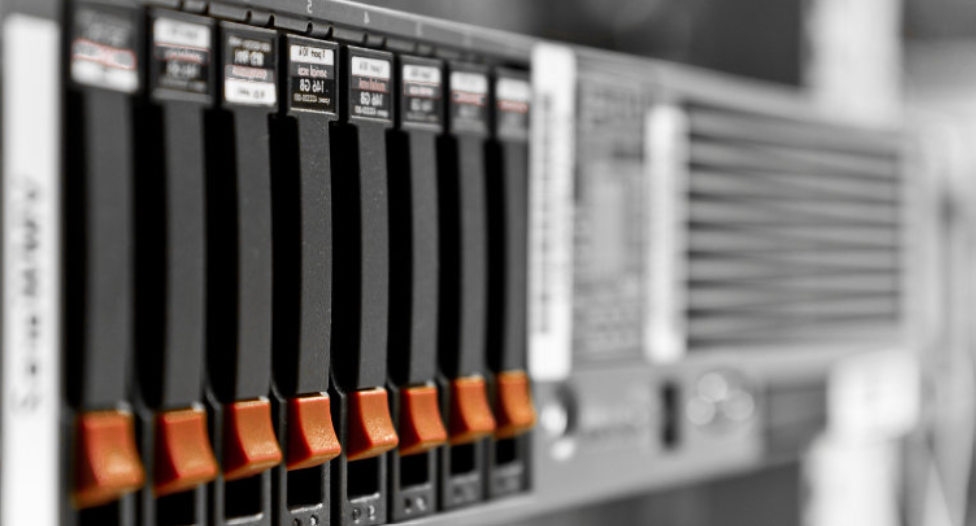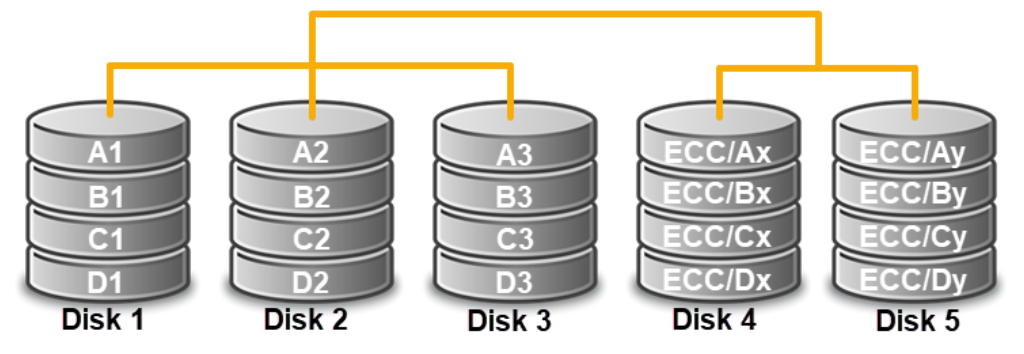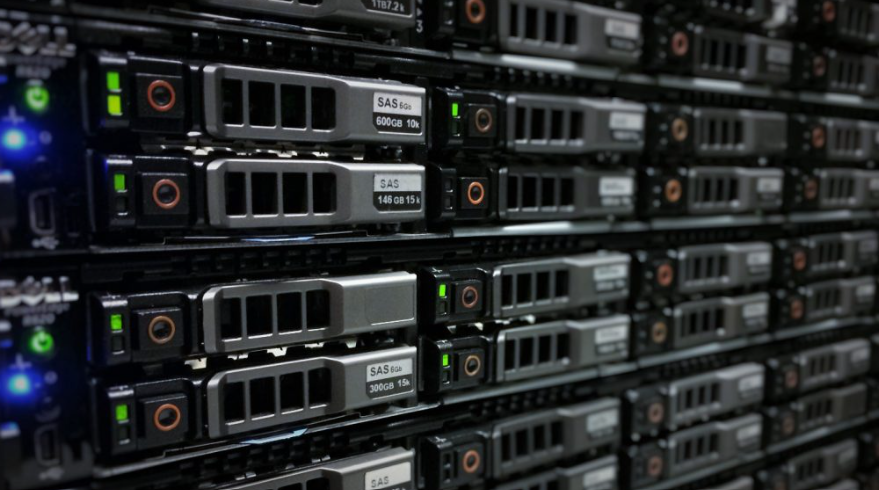The RAID system, a Redundant Array of Independent Disks, is a technology that undoubtedly has changed data storage and management in all these areas. RAID offers better system performance via distributed data across multiple disks. Also, it ensures data redundancy and protection. Throughout this article, we will unveil the basic notions of the RAID technology, including its levels, contribution to data recovery, its influence on performance, implementation options, problems, limitations, and the future of RAID.
Unpacking the Basics of RAID Technology
RAID, an acronym for Redundant Array of Independent Disks, fundamentally transforms multiple physical disk drives into a cohesive unit to enhance data handling capabilities. This technology can provide opportunities for expansion of storage capacity, enhancement of performance, and especially, redundancy in data, which is a key issue in data center safety.
Strip RAID at its core, a spread pattern of the data needs to be created across the drives of a RAID array and it does it in a way that applies either the RAID levels. These levels are distinct in balancing the trio of performance, redundancy, and storage efficiency.
By employing techniques such as striping, mirroring, and parity, RAID configurations can dramatically alter the way data is stored and accessed. For instance, striping disperses data across multiple disks to leverage the speed of simultaneous operations, whereas mirroring duplicates data on two disks to create a fail-safe against data loss.
Parity, utilized in levels like RAID 5, adds another layer of redundancy by allocating space for recovery information. This kind of aware distribution not only allows space to be used optimally but also helps to keep the system alive with a minimal amount of interruption, the highest security since in case of failure of the hard disk, the system will continue to operate.
Exploring the Different Levels of RAID
RAID is not a one-size-fits-all technology; it encompasses various levels, each designed to meet specific requirements in terms of performance, redundancy, and data protection. Starting with RAID 0, known for its striping technique, it excels in performance by writing data across multiple drives simultaneously, albeit without redundancy, making it vulnerable to data loss if a drive fails.
Conversely, RAID 1 relies on mirroring to replicate data across two drives, ensuring that if one drive fails, the other contains an exact copy, thus prioritizing data protection over capacity.
As we move up the RAID levels, we encounter RAID 5, a popular choice that combines performance and redundancy benefits. It employs striping along with parity, a form of error correction that allows data to be reconstructed in the event of a drive failure. This level strikes a balance, offering a compromise between the high performance of RAID 0 and the data protection of RAID 1.
For environments demanding the utmost performance and redundancy, RAID 10 stands out. It integrates the advantages of RAID 1 and RAID 0, utilizing a mirrored set of drives that are then striped. This configuration is a perfect fit as it combines the quick access to data that is so important, with the reliability of highly secure data storage which you can find in many systems where data integrity and availability are essential.
All RAID levels have their features, and the choice of level depends on the particularities of the environment, for example, if it’s more important to have maximum availability, performance, and a security net when it comes to data loss.
The Significance of RAID in Data Recovery
The inherent design of RAID as a multi-disk system plays a pivotal role in data recovery scenarios, making it an indispensable technology for ensuring business continuity and minimizing downtime. When a disk failure occurs within a RAID setup, the architecture’s redundancy features come into play, allowing for the retrieval and reconstruction of lost data.
This process is facilitated by the use of parity in certain RAID levels or through the mirrored data found in others. For businesses and IT environments where data availability is critical, the ability to recover swiftly from hardware malfunctions without losing valuable data underscores the practical significance of RAID configurations. Moreover, the adaptability of RAID to continue operating in a degraded mode until the failed disk is replaced and rebuilt provides a layer of operational resilience that is hard to achieve with single-disk systems.
Thereby, RAID’s contribution to data recovery is not just about data security against any potential data loss; it’s also about cloud operations, and data integrity in real time. When you think of it, this feature is vital in sectors where downtime equates to financial or information losses.
RAID and Its Impact on Performance
The impact of RAID on system performance is a rather complex topic, greatly dependent on the RAID level chosen and the type of system workload. For example, RAID 0 in its striping mechanism greatly increases the performance of data operations by using multiple disks in parallel.
Such a design is particularly applicable to use cases involving high throughput of large files. On the other hand, RAID levels that involve redundancy, such as RAID 1 and RAID 5, may come with a small overhead in the case of mirroring and parity calculations, respectively. Nevertheless, this added cost is often made up by the increased reliability and the peace of mind that comes with the knowledge that data is shielded from drive failure.
Additionally, RAID 10 combines the speed of RAID 0 with the redundancy of RAID 1, providing an improved balance that is suitable for applications requiring both high performance and data security. This is a factor that needs to be taken into account as RAID can really improve performance; however, the actual gain realized will be specific to the RAID configuration and the operational demands of the system.
Implementing RAID: Hardware vs. Software Solutions
A proper RAID selection is based on the aim to obtain the optimum tradeoff between the important features of the implementation: cost, performance, and reliability. On the one hand, hardware raid gives up control RAID operations to a specialized controller thereby outsourcing the task from the main CPU.
Such hardware dedicated method is usually more aggressive and can handle high data load environments better when compared to other approaches. It is extremely useful abilities for I/O-bound applications with stringent latency requirements as RAID controllers can reorganize disk writes more efficiently than software solutions.
On the contrary, software RAID offers a more flexible and economical alternative taking over the RAID functionalities from the host system CPU and operating system. This is seen as an advantage on the one hand, for example, in terms of cost-effectiveness and ease of operation, however, bear in mind, that software RAID will consume more resources of the system, which could, as a result, impact the overall performance.
This is the reason software RAID is the most preferred option in smaller installations or where budget concerns are on the front burner of priorities.
This decision will be based on the system requirements, the available budget, as well as the performance expectations that are set for the system. Depending on the case, each method has its place in the construction of data storage solutions, and the analysis should therefore inform the system owner of what matters most.
Navigating the Challenges and Limitations of RAID
Managing RAID layouts requires you to take into account an array of complexities and limitations. The initial configuration and ongoing management are an issue that requires a deep knowledge of different RAID levels and their effects on the speed and data reliability. These are pretty tricky for non-IT people, raising the risk of misconfigurations that may not fulfill requirements specific to the user.
On the same note, multiple disk utilization raises the likelihood of operational problems and maintenance costs. While RAID provides redundancy to safeguard against data loss, it is not immune to all forms of failure. For instance, simultaneous disk failures in certain RAID levels, like RAID 0, can result in catastrophic data loss. Additionally, RAID does not substitute for regular data backups, as it does not protect against external threats such as ransomware attacks or physical damage.
The expense associated with implementing and upgrading RAID systems, particularly hardware RAID, can also be a significant barrier for smaller organizations. These challenges underscore the necessity for careful consideration and planning when integrating RAID into a storage strategy, ensuring that its benefits are fully leveraged while mitigating potential downsides.
The Future of RAID and Emerging Technologies
The landscape of RAID is indeed quickly evolving and in the process, it is absorbing new and better means of technology to remain at the top of the hierarchy of data management strategies. With solid-state drives (SSDs) nowadays, we witness a major revolution in the key performance indicators and reliability of RAID implementations.
SSDs, access speeds in storage, and the absence of moving parts make RAID sets new possibilities. It allows to bring faster and more durable data storage implementations. Besides, RAID in cloud storage design is a new terrain in which the capacity to scale and behavior of the random access memory can be examined.
The combination of these two scenarios is a practice of dynamic scalability of resources in storage and an increased redundancy of data across the locations which are distributed geographically as a way of protecting against localized hardware breakdowns and natural disasters. The interplay of RAID with newly developed technologies like Artificial Intelligence (AI) and machine learning for predictive failure analysis and automated management, in fact, only enhances the evolution of RAID as a technology further.
These innovations are not only going to refine the performance and efficiency of RAID systems but also take away the complexity of data protection which should make simple mechanisms accessible to everyone. As the future begins, a definite trend in RAID technology is to meet highly relevant needs such as safe, reliable, and global data storage systems.


